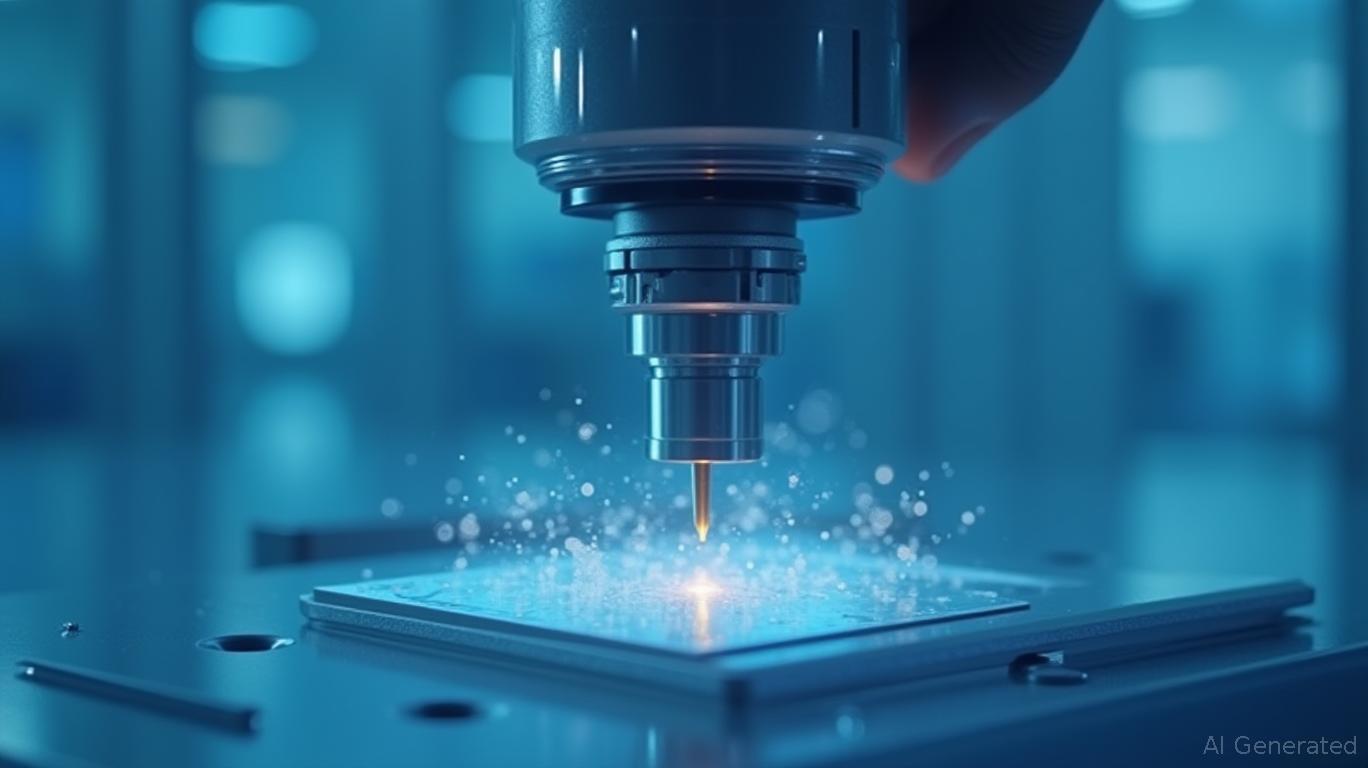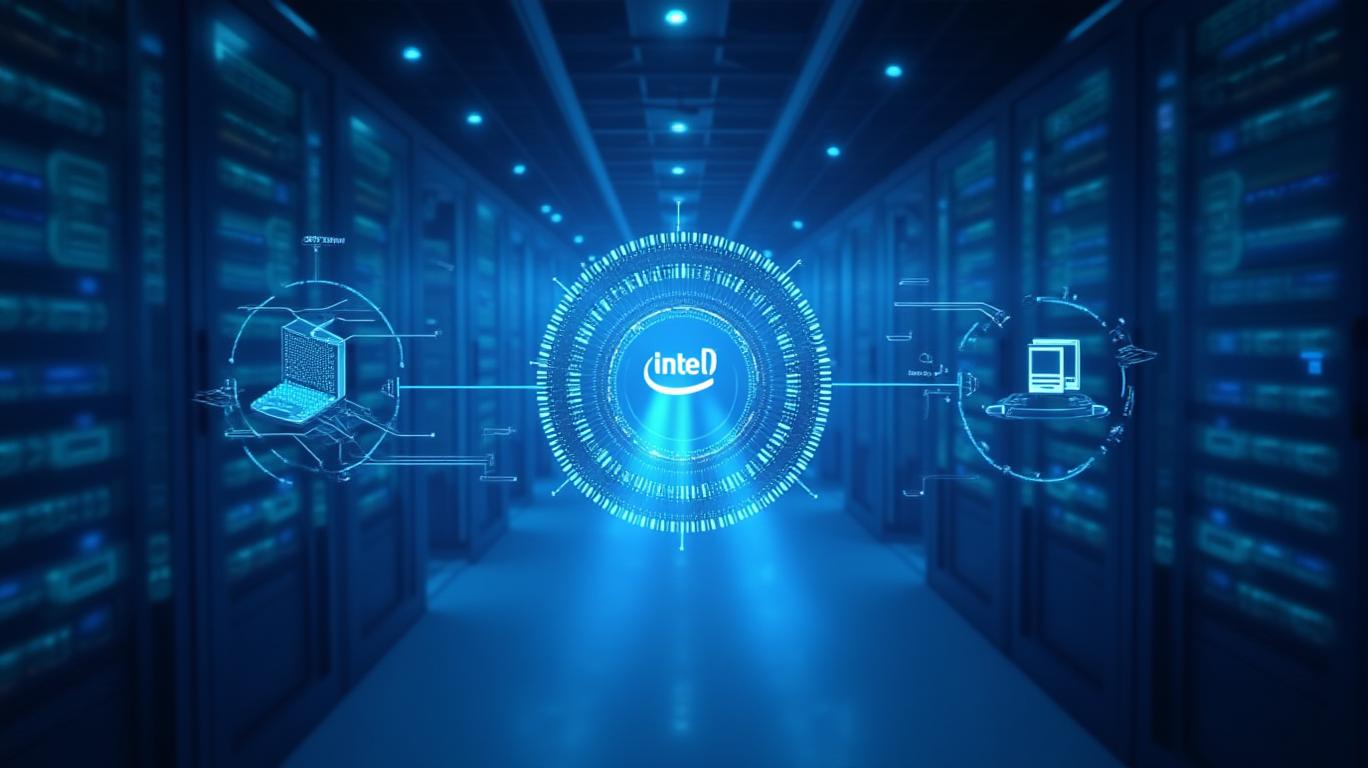Intel's Strategic Shift: Wafer Commitment and Altera Divestiture Signal New Era in Semiconductor Leadership
The semiconductor industry is undergoing a seismic shift, and Intel’s recent moves to amend its foundry agreement and divest a majority stake in its Altera subsidiary mark a pivotal moment in its evolution. By securing a long-term U.S. wafer production commitment and restructuring its relationship with Altera, Intel is recalibrating its focus to capitalize on high-growth markets while mitigating risks. This strategic realignment raises critical questions for investors: How does this transaction position Intel for future success? What risks remain, and how might they impact valuation?

The Foundry Agreement: Ensuring Stability Amid Divestiture
Intel’s amended foundry agreement underscores its dual goals of securing domestic semiconductor supply chains and preserving Altera’s operational independence. The pact obligates Intel to produce 65,000 wafers in the U.S. by 2040, with Altera legally bound to purchase these wafers under a predefined schedule. This structure shields Altera from supply chain disruptions, a critical consideration in an industry where chip shortages have historically stymied growth. The $2.25 billion penalty for premature production halts before 2031 adds teeth to the agreement, incentivizing Intel to honor its commitment.
The financial safeguards extend to quality control, with Intel required to reimburse Altera for substandard wafers—a clause that reflects the premium placed on reliability in high-stakes semiconductor manufacturing. For Intel, this agreement doubles as a strategic hedge: It retains 49% ownership in Altera, ensuring continued exposure to FPGA (field-programmable gate array) market growth while offloading operational risks to Silver Lake, its new partner.
The Altera Sale: Unlocking Value Through Specialization
The sale of 51% of Altera to Silver Lake at an $8.75 billion valuation signals Intel’s confidence in the FPGA market’s future. FPGA chips, which excel in customizable computing applications, are critical to emerging technologies like AI-driven edge computing and robotics. Altera’s 2024 non-GAAP operating income of $35 million—versus a GAAP loss of $615 million—highlights the benefits of excluding one-time costs tied to Intel’s broader operations. This adjustment underscores Altera’s standalone potential, as its financial health becomes untethered from Intel’s broader struggles.
Raghib Hussain’s appointment as CEO adds further credibility. His experience at Marvell and Cavium, where he spearheaded innovation in networking and AI infrastructure, positions him to capitalize on Altera’s AI-driven opportunities. With Silver Lake’s $4.3 billion investment in capital and expertise, Altera is now poised to accelerate R&D and expand into markets that Intel’s broader portfolio might have overlooked.
Risks and Regulatory Hurdles
Despite the transaction’s strategic appeal, risks persist. Regulatory approvals in the second half of 2025 could delay or even block the deal, particularly given heightened scrutiny of semiconductor investments in the U.S. and abroad. Maintaining key personnel and customer relationships will also be critical; Altera’s success hinges on retaining its engineering talent and deepening partnerships with AI innovators.
The foundry agreement’s 2040 expiration date introduces long-term uncertainty. While the 15-year window provides stability, Intel’s ability to sustain wafer production at scale—amid global competition and shifting demand—remains unproven. Investors should monitor to assess whether Intel can deliver on its commitments.
Strategic Implications for Intel’s Core Business
For Intel, the transaction is a masterstroke of focus. By shedding non-core assets and securing a steady revenue stream from Altera’s wafer purchases, it can redirect resources to its main priorities: advancing CPU architecture, competing in cloud infrastructure, and leveraging its $40 billion in cash (as of Q1 2025) for strategic acquisitions. The $8.75 billion valuation also represents a significant balance sheet boost, potentially enabling stock buybacks or debt reduction.
Conclusion: A Calculated Gamble with High Upside
Intel’s moves reflect a clear-eyed assessment of its strengths and weaknesses. By anchoring Altera’s future in specialized FPGA innovation while securing U.S. manufacturing commitments, it has created a win-win scenario: Altera gains the agility to compete in fast-growing AI markets, while Intel retains upside exposure without the operational burden.
The financials are compelling: Altera’s non-GAAP margins suggest it could become a profitable standalone entity, and the $2.25 billion penalty clause acts as a failsafe for investors. However, risks like regulatory delays and wafer quality issues loom large. For investors, the key metric will be . If Altera can sustain the momentum hinted at in its 2024 results, Intel’s bet could pay dividends—both literally and figuratively.
In a sector where missteps are costly, Intel’s disciplined approach to divestiture and risk management positions it as a leader capable of navigating the next decade’s semiconductor landscape. The question now is whether its partners—Silver Lake, Altera’s new leadership, and the U.S. manufacturing ecosystem—can deliver on the promise. For investors, the answer could redefine the next era of tech investing.


_442a2dcc1749832873286.jpeg)
_e68fac6d1749831664430.jpeg)






